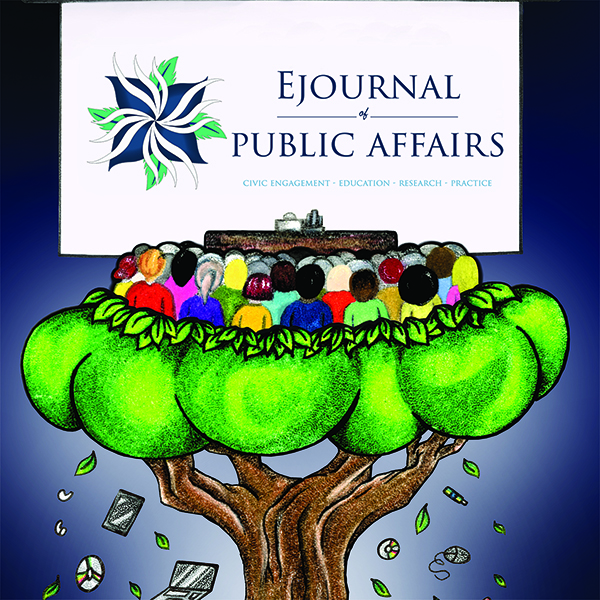By Lori McKinney and Lisa Kim
Learning Through Serving: A Student Guidebook for Service-Learning and Civic Engagement Across Academic Disciplines and Cultural Communities (2nd Edition) by Christine M. Cress, Peter J. Collier, Vicki L. Reitenauer, and Associates
Metropolitan State University of Denver
Learning Through Serving: A Student Guidebook for Service-Learning and Civic Engagement Across Academic Disciplines and Cultural Communities (2nd Edition), by Christine M. Cress, Peter J. Collier, and Vicki L. Reitenauer. Stylus Publishing. July 2013. ISBN: 978-1-57922-990-0. 240 pages. Paperback, $27.50.
Author Note
Lori McKinney, Applied Learning Center, Metropolitan State University of Denver; Lisa Kim, Applied Learning Center, Metropolitan State University of Denver.
Correspondence regarding this article should be addressed to Lori McKinney, Applied Learning Center, Metropolitan State University of Denver, P.O. Box 173362, Campus Box 7, Denver, CO 80217. Phone: (303) 615-0985. E-mail: lmckinn9@msudenver.edu
Educators frequently adopt pedagogies, such as service-learning, that are purported to comprise best practices. However, students are not always privy to the background research that informs and supports these strategies. In Learning Through Serving (2nd edition, 2013), Cress, Collier, Reitenauer, and Associates address group work, community partnerships, identities, critical reflection, and other topics that are integral to service-learning. Their exposition provides students with insights into the rationale behind this pedagogy and how to successfully navigate service-learning, rather than simply imposing activities on them. If students have had previous negative experiences with group work or community involvement, for instance, it is particularly important to unpack these dynamics so that they give new experiences a fair chance and avoid repeating negative patterns. The authors also address student concerns about “what difference” service-learning makes by talking about starting from anywhere and moving forward from that point.
Each chapter of Learning Through Serving begins with an explanation of one aspect of service-learning (e.g., building community partnerships) followed by targeted exercises and reflection activities related to the topic. Although Cress et al. indicate the critical nature of specific exercises in the book, we did not always agree, as our comments reflect both a faculty perspective and a non-traditional-aged student perspective. Traditional-aged students or students who are earlier in their academic careers would most likely benefit from some of the guidebook’s basic clarifications, as well as its straightforward guidance about professional and participatory behavior in community settings. Older students, however, may have already encountered some of the self-reflection exercises in the book or discovered successful ways of working with others. Faculty should therefore choose exercises to suit the diversity of students they are teaching.
The most energizing exercises in Learning Through Serving provide a compelling mix of challenging and opinion-based questions. For example, Exercise 2.6 (“Exploring Breakdowns”) is designed to help students anticipate and problem-solve common breakdowns in communication and expectations when working with multiple stakeholders. The exercise presents vignettes in which students can evaluate communication breakdowns from different perspectives. There is an appropriate mix of scenarios that encourage students to both take ownership of their mistakes or confusion and to address potential conflicts with community partners. This exercise would serve as a fitting team project in which teams respond to one scenario and then discuss that response with the entire class, since an individual student would not be able to respond to all of the scenarios posed. Exercise 8.1 (“A Leader You Admire”) asks students to think about someone they consider a leader and to answer questions about that individual’s qualities. The exercise highlights the importance of finding a balance between thinking about the self and about others in leadership. Indeed, there are many examples of leadership (at all levels), and it is important to recognize and acknowledge moments of great leadership in today’s uncertain and polarizing times. Another exercise—Exercise 10.1 (“Menial Tasks”)—offers younger students guidance around tying menial tasks to the big picture and, as a result, shifting their perspective on boredom. Specifically, the exercise directs students to make a list of tasks that seem menial and to link them to bigger goals. A modified version of this exercise might involve asking students to list ways they stayed present in, or made the most of, their menial tasks—an opportunity to shift from negative thinking to forward thinking.
We felt that other chapters in the book, while informative, presented too many reflection questions (e.g., Chapter 1, “What are Service-Learning and Civic Engagement?”; Chapter 8, “Leadership and Service-Learning”) to answer in one exercise. Faculty should consider requiring students to only respond to three or four of the questions if the instructor is looking for lengthy or thoughtful responses. Exercises 2.2 to 2.5 (“What Can a Community Partner Expect?”; “Hopes, Fears, Needs, and Expectations”; “Mapping Assets, Interests, and Needs”; “Organizational Action Research”) along with Exercises 2.7 and 2.8 (“Action Learning Plan for Serving”; “Which Type of Community-Based Learning is Right for Me?”) all represent effective means for getting students to step outside themselves and think about the entire context surrounding community partners. However, all of the latter exercises are very similar and could be consolidated and simplified into one “form” or worksheet. Likewise, Exercise 8.5 (“Tools for Instrumental Leadership”) may be redundant since it is the sort of self-assessment exercise that would likely be covered in other classes; on the other hand, if a student has not had a chance to engage in “real-world” experiences, the exercise would be a good opportunity to identify personal strengths, weaknesses, goals, and interests. Some exercises (e.g., Exercise 2.3: “Hopes, Fears, Needs, and Expectations”) might be considered from different perspectives as well. Instead of asking about students’ hopes and fears, it may be more meaningful to rephrase these questions so that students can practice seeing experiences from the perspective of community partners. Though, overall, these exercises could be very powerful and useful in helping students to think critically, identify client/community needs, anticipate challenges, create action plans, and manage projects, the book consists of too many overlapping items.
Additionally, while we understand the intent of Chapter 5 in defining, categorizing, and illustrating different cultural contexts, the tone of the chapter seems overly academic and theoretical. We would have preferred that the authors be more direct in their discussion about setting expectations of behavior and professionalism. Students need to learn how to conduct themselves when they are interacting with vulnerable populations that are often drastically different from them. The book’s student reflections about culture are excellent examples of students learning cultural humility and cultural awareness, but the examples are limited. Perhaps instructors can pull from their own personal observations when discussing cultural contexts.
The final section of the book succeeds in encouraging students to think about outcomes beyond the attainment of an academic grade. For instance, Chapter 11 presents the CIE (concept, indicator, evidence) model, whereby students identify the concept being evaluated (e.g., student awareness of homelessness), measurable indicator(s), and evidence to support the evaluation. Chapter 13 argues that focusing on small changes is a way to get started on making a difference. The book concludes by urging students to consider how they have changed in the process of completing the exercises and how they will move forward as the change they would like to see in the world.
Overall, we consider Learning Through Serving a valuable resource for students taking service-learning courses and for teaching assistants leading such courses. It explains many of the processes involved in service-learning and the rationale behind them. The exercises are suitable and relevant or can be easily modified to suit target audiences. Furthermore, the book is reasonably priced, making it possible to add the volume to a course reading list without placing much financial burden on students.
Authors
 Lori McKinney, Ph.D. is faculty/administrator in service learning at the Applied Learning Center, Metropolitan State University of Denver.
Lori McKinney, Ph.D. is faculty/administrator in service learning at the Applied Learning Center, Metropolitan State University of Denver.
 Lisa Kim is a non-traditionally aged, first-generation student who has corporate and community experience, but has enthusiastically embraced service-learning. Lisa is student staff assistant for the service learning program at Metropolitan State University of Denver.
Lisa Kim is a non-traditionally aged, first-generation student who has corporate and community experience, but has enthusiastically embraced service-learning. Lisa is student staff assistant for the service learning program at Metropolitan State University of Denver.



